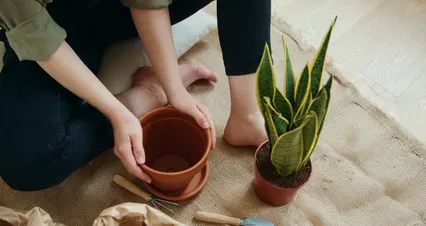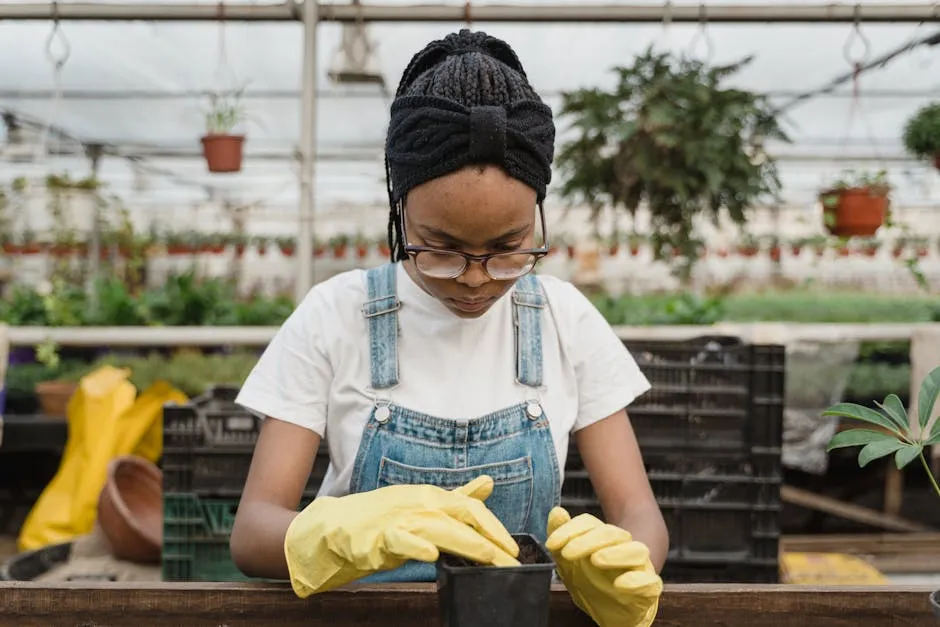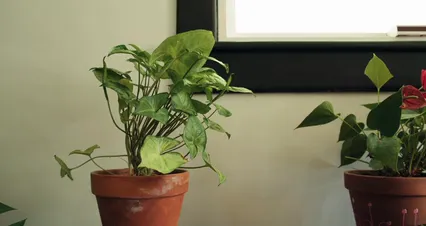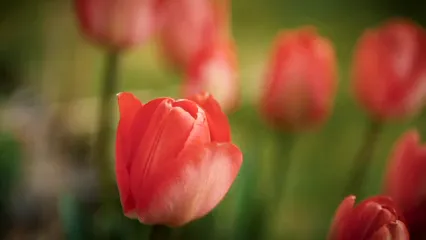

Small Peace Lily Plant: The Ultimate Care Guide
Introduction
Have you ever considered adding a small peace lily to your home? This charming houseplant is not only beautiful but also easy to care for. With its glossy green leaves and elegant white blooms, it enhances any indoor space. Plus, it thrives with minimal effort! In this article, we’ll provide a detailed care guide to help your small peace lily flourish.
Before you start, make sure you have the right supplies. A well-draining potting mix is essential. If you’re looking for an excellent option, check out this Potting Mix for Indoor Plants. It retains moisture while allowing excess water to escape, which is crucial for your peace lily’s health!

Summary and Overview
Peace lilies are beloved houseplants known for their stunning appearance. They typically feature lush, dark green leaves and striking white flowers. Understanding how to care for them is crucial for a healthy plant. You’ll learn about common issues, including yellowing leaves and stopped flowering, and how to tackle them.
Small peace lilies offer numerous benefits. They purify the air and add a touch of beauty to your home. Throughout this guide, we’ll share practical tips and insights for keeping your small peace lily vibrant and healthy.

Understanding the Small Peace Lily Plant
Characteristics of Small Peace Lilies
Small peace lilies usually grow between 12 to 30 inches tall. Their leaves are glossy, oval-shaped, and can reach up to 10 inches in length. The flowers are captivating, with a white spathe that surrounds a central spike.
There are various small peace lily species, each with unique traits. Some may have variegated leaves, while others might produce larger blooms. These plants thrive in bright, indirect sunlight and prefer a humid environment to flourish. Proper care ensures these beauties will brighten your space for years to come.
Planting Your Small Peace Lily
Choosing the Right Location
Finding the perfect spot for your small peace lily is crucial. These plants thrive in bright, indirect light. Too much direct sunlight can scorch their leaves. Aim for a north-facing window or a well-lit room.
Humidity plays a big role in their growth too. Peace lilies enjoy a humid environment. Bathrooms or kitchens are often ideal locations. Keep the temperature between 65°F and 85°F for optimal growth.
To maintain humidity, consider misting your plant. A small humidifier nearby can also help. If you want to elevate your plant care game, check out this Humidifier for Plants. It’ll keep your peace lily feeling pampered!

Ideal Soil and Potting
Choosing the right soil is vital for your peace lily. A well-draining potting mix is best. Look for soil that retains moisture but allows excess water to escape.
When potting, select a container with drainage holes. Good drainage prevents root rot, a common issue. A pot size that’s slightly larger than the root ball works best.
For materials, clay pots are excellent. They help regulate moisture levels. If you prefer plastic, ensure it has proper drainage too. Regularly check the potting mix for dryness to keep your plant happy.

Caring for Your Small Peace Lily
Watering Techniques
Watering your small peace lily requires a delicate balance. Consistency is key, but avoid overwatering. Check the soil moisture regularly. If the top inch feels dry, it’s time to water.
Signs of underwatering include drooping leaves. Conversely, yellow leaves may indicate overwatering. Adjust your watering frequency based on the season.
During warmer months, you might need to water more often. In winter, reduce the frequency. Always use room-temperature water to avoid shocking the roots. Following these practices ensures your peace lily stays healthy and vibrant.

Fertilization Essentials
Fertilizing your small peace lily is key for vibrant growth. You should fertilize during the growing season, which is spring through early fall. Use a balanced, water-soluble fertilizer, like a 20-20-20 blend. Mix it according to package instructions. Apply it every 4-6 weeks to keep your plant nourished.
For best results, try this 20-20-20 Water Soluble Fertilizer. This will give your peace lily the nutrients it craves!

Pruning and Maintenance
Pruning your small peace lily is essential for its health. Remove dead or yellowing leaves as they appear. This keeps the plant looking tidy and promotes new growth. You can prune any time of year, but spring is ideal.
To assist with pruning, a good pair of Pruning Shears can make the job much easier. With these, you can ensure clean cuts that promote healthy growth!

Troubleshooting Common Issues
Yellowing Leaves
Yellow leaves on your small peace lily can be frustrating. Overwatering is a common culprit. If the soil feels soggy, cut back on watering. Ensure that the pot has drainage holes to prevent root rot.
Nutrient deficiencies can also cause yellowing. A lack of nitrogen, iron, or magnesium can affect leaf color. To correct this, fertilize your plant with a balanced formula. Additionally, ensure your peace lily receives adequate humidity. Misting the leaves can help maintain moisture levels and prevent browning tips.

Stopped Flowering
If your small peace lily has stopped blooming, you’re not alone. This can happen for several reasons. First, inadequate light is a common factor. Peace lilies need bright, indirect light to produce flowers. Without it, they may focus on growing leaves instead.
Another reason could be nutrient deficiency. If your plant isn’t getting enough food, it may skip flowering. Lastly, environmental stress, like sudden temperature changes or pests, can hinder blooming.
To encourage your peace lily to bloom again, start by adjusting its light conditions. Place it near a window where it receives indirect sunlight. Next, fertilize regularly during the growing season with a balanced fertilizer. This will provide the nutrients it needs for healthy blooms. Lastly, ensure your plant is in a stable environment. Avoid drafts and extreme temperature fluctuations to promote flowering.

Pest Control
Peace lilies, while relatively resilient, can attract some pests. Common culprits include aphids, spider mites, and mealybugs. These pests can sap the plant’s energy and cause damage to the leaves and flowers.
To manage pests effectively, start with regular inspections. Check the undersides of leaves for signs of infestation. If you spot pests, you can use a mixture of water and mild soap to wash them away. For a more severe infestation, consider using Neem Oil for Pest Control or Insecticidal Soap for Plants. These will help keep your peace lily pest-free!
Understanding how to manage common pests is essential for keeping your peace lily healthy. Explore common pests and their control methods.
Natural control options include introducing beneficial insects like Ladybug House for Natural Pest Control, which prey on aphids. If you prefer chemical options, ensure to follow the product instructions carefully. Always test a small leaf before full application to avoid plant damage. Regularly monitoring your peace lily can help keep it pest-free and thriving.

Propagating Your Small Peace Lily
Methods of Propagation
Propagating your small peace lily is a rewarding process. The most effective method is division. Here’s a step-by-step guide:
- Choose the right time: Spring is ideal for propagation.
- Prepare your tools: Gather clean scissors or a sharp knife.
- Remove the plant: Gently take your peace lily out of its pot.
- Inspect the roots: Look for healthy rhizomes with several leaves.
- Divide the rhizomes: Cut the rhizome into sections, ensuring each has roots and leaves.
- Replant: Place the new divisions in separate pots with fresh, well-draining soil.
- Water thoroughly: After planting, give them a good soak.
To ensure success during propagation, keep the new plants in a warm, humid environment. Mist them regularly to maintain moisture. Avoid direct sunlight until they establish roots. With patience and care, your small peace lily will thrive and flourish in its new pots.

Safety Considerations
Toxicity of Peace Lilies
Small peace lilies are beautiful but can pose risks. They contain calcium oxalate crystals. If ingested, these crystals can cause irritation in pets and children. Symptoms may include drooling, vomiting, or difficulty swallowing. Always keep these plants out of reach of curious pets and little hands.
To ensure safety, place your peace lily in a high location. Consider using Hanging Planters or shelves. If you have pets, monitor their behavior around the plant. Teaching children about plant safety is crucial. Let them know some plants can be harmful.
If you suspect ingestion, contact your vet or a poison control center immediately. Being proactive can keep your home safe while enjoying your plant’s beauty.

Conclusion
In summary, small peace lilies are low-maintenance houseplants. They enhance indoor spaces with beauty and air-purifying qualities. With proper care, including watering, fertilizing, and pruning, they thrive wonderfully.
Consider adding a small peace lily to your collection. They can brighten up any room and make excellent companions. Remember, with the right attention, small peace lilies will flourish and bring joy to your environment.

FAQs
How often should I water my small peace lily?
For small peace lily watering frequency, check the soil. Water when the top inch feels dry.
Can a small peace lily grow in low light?
Yes, small peace lily light requirements include bright, indirect light, but they tolerate lower light conditions.
Why are the leaves of my small peace lily turning brown?
Brown leaves small peace lily may indicate too much direct sunlight or low humidity.
What is the best fertilizer for small peace lilies?
Fertilizing small peace lilies with a balanced liquid fertilizer every 4-6 weeks during the growing season is ideal.
How do I propagate my small peace lily safely?
Propagating small peace lily involves division during repotting. Ensure you wear gloves to protect your skin.
Are small peace lilies safe for pets?
Small peace lily safety for pets is a concern. They can be toxic if ingested, so keep them out of reach.
How long do small peace lilies typically last?
The lifespan of small peace lilies can reach several years with proper care and maintenance.
Please let us know what you think about our content by leaving a comment down below!
Thank you for reading till here 🙂
All images from Pexels



